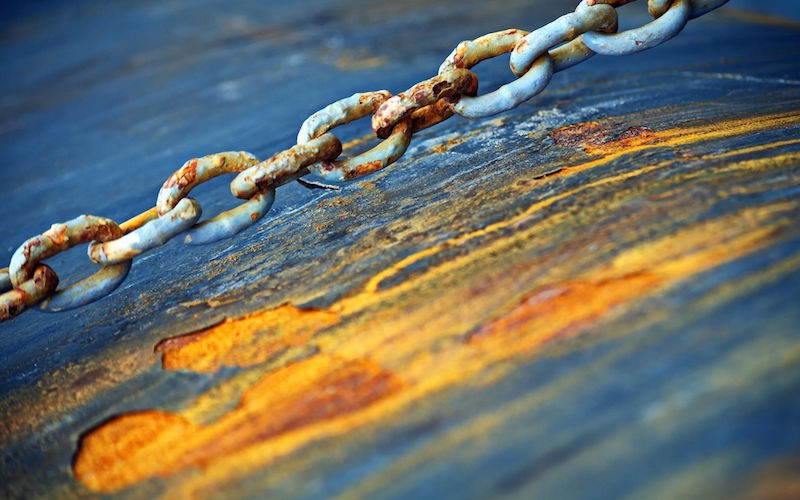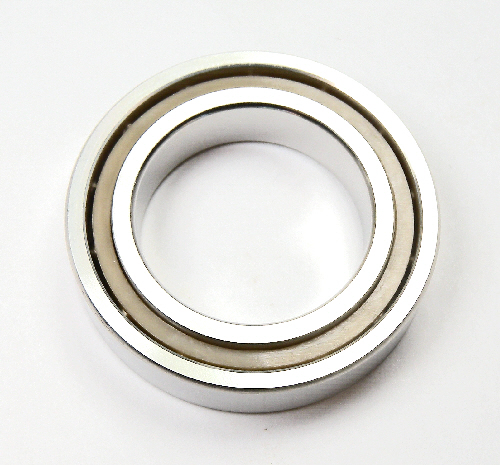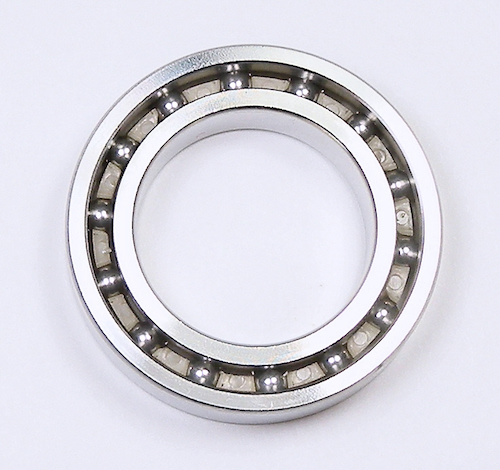Up to 40 per cent of a vegetable crop can go to waste due to the aesthetic requirements of some supermarkets. While a wonky vegetable may not be the most visually pleasing, it possesses the same nutritional value as its perfectly proportioned counterpart.

Bearing surface damage can take many forms, from spalls in the raceways, wear from ineffective lubrication, corrosion due to harsh chemicals to false brinelling marks caused by static vibration. While surface distress can result in problematic symptoms such as excessive heat, increased noise levels, increased vibration or excessive shaft movement, not all external bearing flaws point to compromised internal machine performance.
Corrosion is a naturally occurring phenomenon and a common form of bearing surface damage that offshore oil and gas plant managers must contend with. There are ten primary forms of corrosion, but bearing corrosion usually falls into two broad categories — moisture corrosion or frictional corrosion. The former is environment specific, but can appear on any component of the bearing, creating an alarming oxide layer as a result of a chemical reaction with a metal surface.

For example, in offshore mining, bearings are often exposed to moisture or mild alkalinity due to their contact with sea water. Mild corrosion may result in light surface stains, but in more serious cases, it can lead to etching on the surface of the bearing, resulting in flakes of rusted material entering the raceway. For this reason, corrosion is often known as the natural enemy of bearings.
Corrosion isn’t just visually alarming; it can also significantly impact a business’ finances. According to the IMPACT study conducted by NACE International, the world’s leading corrosion control organisation, it has been estimated that 15-35 per cent of annual corrosion could have been saved if optimum corrosion management practices were followed. This equates to savings between US$375 and $875 billion annually on a global basis.
 The enemy?
The enemy?
It’s impossible to ignore the significance of corrosion costs, however corrosion resistance must be considered alongside other operating requirements such as bearing longevity and load.
Consider this as an example. A drilling machine is required to operate with precision but must also operate in unforgiving conditions. Due to the extreme environment of oil and gas rigs, corrosion resistant bearings would be recommended. If a design engineer were to opt for a highly corrosion resistant bearing fabricated from polyether ether ketone (PEEK), this would stop the corrosion in its tracks, but the precision of the machine would be compromised. In this scenario opting for a high precision stainless steel bearing with superior roundness while allowing some superficial corrosion may be preferable.
When assessing the suitability and quality of bearings, it is important to look beyond the external aesthetic. Corrosion control is just one performance requirement, which doesn’t necessarily equate to poor performance or affect the bearing’s internal rollability.
Ensuring the right equipment is selected is the first step — and this is imperative for both large-scale machinery and small components, such as bearings. Luckily, offshore facility managers can weigh up their design requirements and can choose to combat corrosion at the design stage. Here are three corrosion control methods to consider:
A-Material choice
Stainless steel is the most obvious choice for corrosion resistance and is widely used in the offshore oil and gas industry. It also has other advantageous properties such as durability and heat resistance. 440 grade stainless steel bearings have good resistance in damp environments and are often used in applications such as the food and beverage industry. However, 440 grade stainless steel bearings have poor resistance to salt water and many stronger chemicals, so for harsh offshore environments 316 stainless steel may be considered. However, as 316 stainless steel cannot be thermally hardened, 316 bearings are only suitable for low load and low speed applications. Their corrosion resistance is best when there is an ample supply of oxygen so these bearings are mainly used above the waterline, in flowing seawater or where the bearings can be washed down after submersion in seawater.

An alternative material option is ceramic. Full ceramic bearings made from zirconia or silicon nitride with PEEK cages can offer even higher levels of corrosion resistance and are often used fully submerged. Similarly, plastic bearings, with 316 stainless steel or glass balls, provide very good resistance to corrosion. These are often made from acetal resin (POM) but other materials are available for stronger acids and alkalis such as PEEK, polytetrafluoroethylene (PTFE) and polyvinylidene fluoride PVDF. Like 316 grade bearings, these should only be used in low load and low precision applications.
Another level of armour against corrosion, is a protective coating. Chromium and nickel plating offer good corrosion resistance in highly corrosive environments. However, coatings will eventually separate from the bearing and need continual maintenance. This isn’t the most practical option for offshore applications.
B-Lubricants
A lubricant provides a thin film between the contact areas in a bearing to reduce friction, dissipate heat and inhibit corrosion on the balls and raceways. Surface roughness and lubrication quality are extremely important influencing factors as to whether surface distress will occur or not.
Opting for the correct lubricant matters. In an environment where superficial corrosion may occur on the outside of the bearing, it should not be allowed to occur on the inside. SMB Bearings can supply sealed bearings with waterproof greases that contain corrosion inhibitors. These lubricants protect the internal surfaces of the bearing and can be matched to the specific offshore application environment. Full ceramic bearings are mostly specified without lubrication but can be lubricated with waterproof grease for extended life.
C-Seals
In harsh environments, contamination protection is of utmost importance, so opting for a contact seal is favourable to ensure contaminants do not enter the bearing. For equipment that may be exposed to moisture, a contact seal will also offer increased water resistance. This will stop grease washing out of the bearing, allowing it to do its job in lubricating and protecting the internal surfaces of the bearing. An alternative option is a metal shield but this offers greatly reduced protection against moisture.
By assessing the operational environment, required longevity and loads that will be applied to the bearing, the best bearing may be the humble ‘wonky vegetable’ and not the one that remains looking aesthetically pleasing for the longest. By considering a bearing’s full environmental operating conditions, design engineers can weigh up whether opting for a corrosion control design feature will be the most cost effective, increase the bearing’s lifespan and elevate a machine’s performance.
Post time: Apr-07-2021





